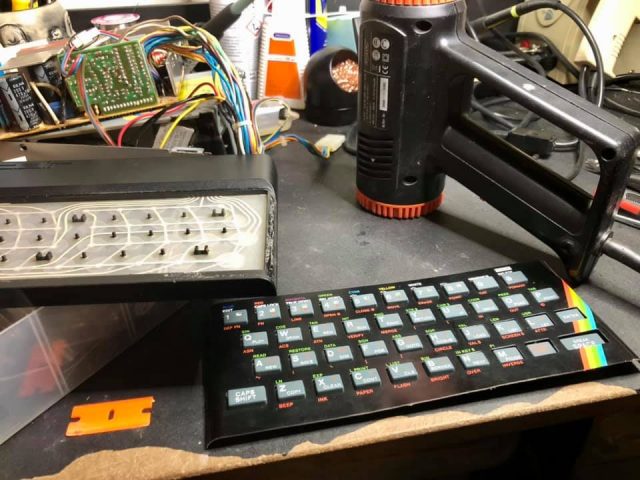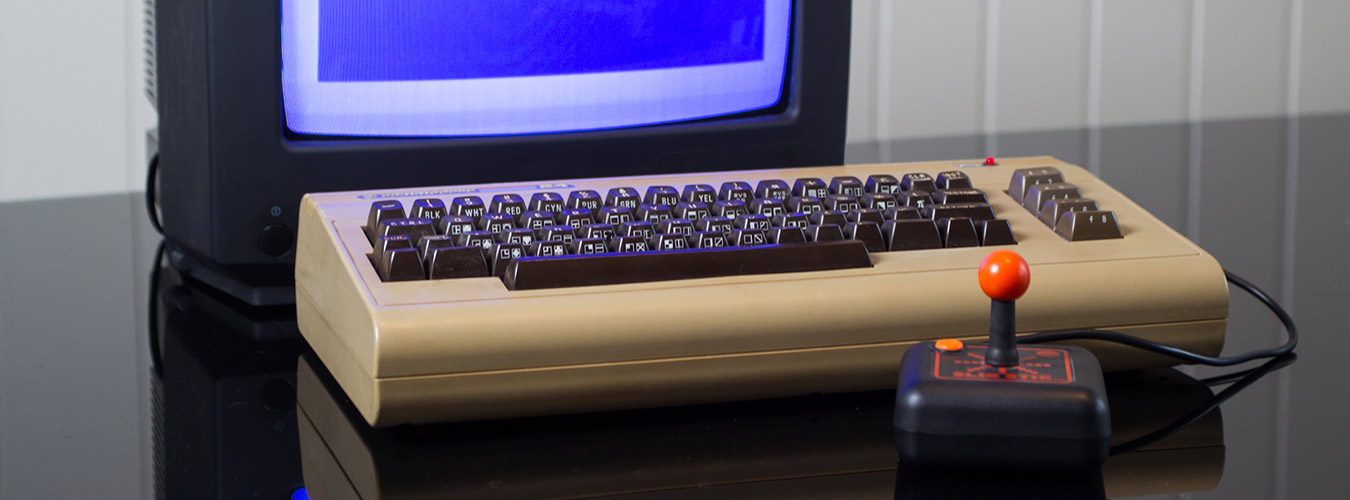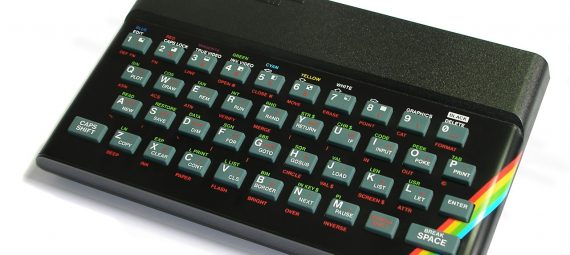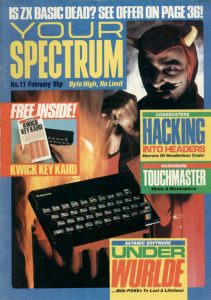Released 1982: The ZX Spectrum is a family of 8-bit personal home computers developed by Sinclair Research. It was first released in the United Kingdom on 23 April 1982. Many unofficial clones were released around the world throughout the 1980s. Referred to during development as the ZX81 Colour and ZX82,it was launched as the ZX Spectrum by Sinclair to highlight the machine’s color display, compared with the black and white display of its predecessor, the ZX81. The Spectrum was released as eight different models, ranging from the entry level with 16 KB RAM released in 1982 to the ZX Spectrum +3 with 128 KB RAM and built in floppy disk drive in 1987. Altogether they sold over 5 million units worldwide (not counting clones).
Facts
- Type: Home computer
- Developer: Sinclair Research
- Released: 1982
- Discontinued: 1985
- Intro price: GBP 125 (16KB)/GBP 175 (48KB)
- CPU: Z80A@3.5 MHz and equivalent
- Memory: 16 KB or 48 KB
- ROM: 16 KB
- Video: 256 x 192 (32 column x 24)
- Audio: 1 chn beeper (10 octaves)
- Storage: Cassette, ZX Microdrive
- Predecessor: Sinclair ZX81
- Successors: ZX Spectrum+
The Spectrum was among the first home computers in the UK aimed at a mainstream audience. The popularity of the ZX Spectrum led to many companies producing software and hardware for the machine. Licensing deals and clones followed, earning Clive Sinclair a knighthood for services to British industry.
The Commodore 64, Dragon 32, Oric-1, Oric Atmos, BBC Micro and later the Amstrad CPC range were rivals to the Spectrum in the UK market during the early 1980s. The machines was officially discontinued in 1992.
The Sinclair models featured audio line in and out, in the form of an “ear” and “mic” socket. An external tape recorder was needed to load the majority of software released, or the ZX Microdrive. Either socket could be connected to headphones or an amplifier as an audio output, although this would not disable the internal speaker.
ZX Spectrum 16K/48K
The original ZX Spectrum is remembered for its rubber keyboard, diminutive size and distinctive rainbow motif. It was originally released on 23 April 1982 with 16 KB of RAM for £125 (equivalent to £348.92 in 2019) or with 48 KB for £175 (equivalent to £488.48 in 2019). These prices were later reduced to £99 and £129. Owners of the 16 KB model could purchase an internal 32 KB RAM upgrade, which for early “Issue 1” machines consisted of a daughterboard. Later issue machines required the fitting of 8 dynamic RAM chips and a few TTL chips. Users could mail their 16K Spectrums to Sinclair to be upgraded to 48 KB versions. Later revisions contained 64 KB of memory but were configured such that only 48 KB were usable. External 32 KB RAM packs that mounted in the rear expansion slot were available from third parties. Both machines had 16 KB of onboard ROM.
Hardware
The Spectrum is based on a Zilog Z80, a CPU running at 3.5 MHz (or NEC D780C-1 clone). The original model has 16 KB (16×1024 bytes) of ROM and either 16 KB or 48 KB of RAM. Video output is through an RF modulator and was designed for use with contemporary television sets, for a simple color graphic display. Text can be displayed using 32 columns × 24 rows of characters from the ZX Spectrum character set or from a set provided within an application, from a palette of 15 shades: seven colors at two levels of brightness each, plus black. The image resolution is 256×192 with the same color limitations. To conserve memory, color is stored separate from the pixel bitmap in a low resolution, 32×24 grid overlay, corresponding to the character cells. In practice, this means that all pixels of an 8×8 character block share one foreground color and one background color.
An “attribute” consists of a foreground and a background color, a brightness level (normal or bright) and a flashing “flag” which, when set, causes the two colors to swap at regular intervals. This scheme leads to what was dubbed color clash or attribute clash, where a desired color of a specific pixel could not necessarily be selected. This became a distinctive feature of the Spectrum, meaning programs, particularly games, had to be designed around this limitation.
Sound output is through a beeper on the machine itself, capable of producing one channel with 10 octaves. Software was later available that could play two channel sound. The machine includes an expansion bus edge connector and 3.5 mm audio in/out ports for the connection of a cassette recorder for loading and saving programs and data. The “ear” port has a higher output than the “mic” and is recommended for headphones, with “mic” for attaching to other audio devices as line in. It was manufactured in Dundee, Scotland, in the now closed Timex factory.
My ZX Spectrum 16K/48K
Got myself a ZX Spectrum 16K (upgraded to 48K) and the ZX Spectrum+ in a trade for other retro-stuff. The machine had distortion on the display of some sort and a non working keyboard, no audio and a RAM chip failed. Ended up spending way much more time repairing this than first expected.
- Recap: Replaced all the capacitors. They tend to degrade their attributes and potentially make all sort of problem. This didn’t fixed the display distortion. Also did the Issue 2 board “service mods”.
- Potentiometer: Replaced a broken adjustment potentiometer.
- Keyboard membrane: Replaced the keyboard membrane with a new reproduction one and the keyboard connectors.

- No sound: Replaced diode D9 fixed audio.
- Recap: Replaced the capacitors. They tend to degrade their attributes and potentially make all sort of problem like degrade display quality.
- Video composite mod: Converted the RF “antenna” connector into video composite. This fixed the display problem.
- RAM chip: A RAM chip had failed in the “upper RAM” area. Located the failed chip by “piggy back” a working RAM chip on top of the chips, one by one in turn.






One thought on “ZX Spectrum 16K/48K”